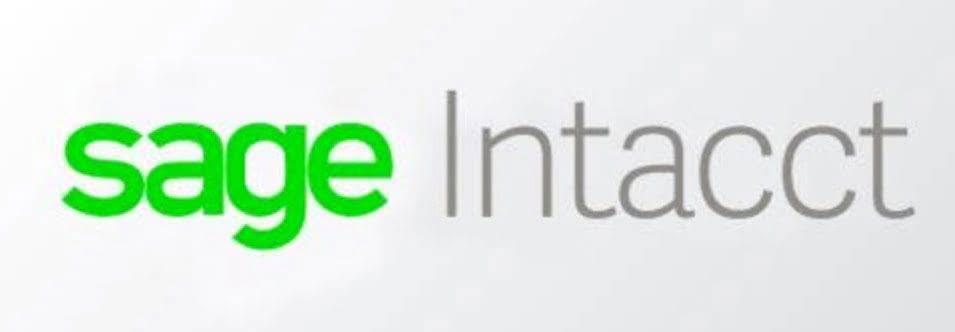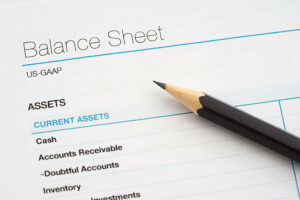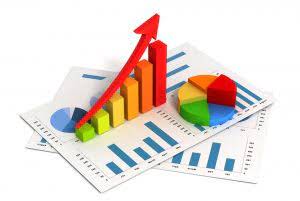Content

Think of the unpaid bill that you sent to the customer two weeks ago, or the invoice from your supplier you haven’t sent money for. Next, you’ll use the general ledger to record all of the financial information gathered in step one. Recording entails noting the date, amount, and location of every transaction. For example, if a receipt is from Walmart, was it office supplies? Cash Flow StatementsA Statement of Cash Flow is an accounting document that tracks the incoming and outgoing cash and cash equivalents from a business.
Accordingly, the information provided should not be relied upon as a substitute for independent research. Intuit Inc. does not warrant that the material contained herein will continue to be accurate nor that it is completely free of errors when published. With records and receipts strewn throughout your office, completing the accounting cycle can be a challenge. This is a method to track all the transactions by recording them in chronological order as they take place.
What Are The Stages Of The Accounting Cycle?
Entries that are recorded are usually separated into credit and debit along with the date and a summary of the transaction. Those transactions are noted in the appropriate financial journal, depending on what the money was spent on or originated from.
- Exhibit 5.The organization’s active accounts are all in view for the trial balance.
- The proper order of the accounting cycle ensures that the financial statements your company produces are consistent, accurate, and conform to official financial accounting standards .
- Verify the beginning balance of retained earnings that will be used starting with the next monthly accounting period close in the following business year.
- He needs to do this process for every transaction occurring during the period.
- Usually, this listing is prepared at the end of a financial period.
During the chosen accounting period, financial statements are created and shared. To ensure compliance, it’s common for business owners to end each accounting period annually. The accounting cycle begins with a bookkeeper or accountant documenting your business’s financial transactions. Once the accounting period ends, the books are closed, and financial statements are created detailing the information captured.
Record Transactions As Journal Entries
At the end of each period, you’ll use closing entries to finalize your expense and revenue records. When it becomes clear an error exists somewhere in the system, accountants may create “temporary adjusting accounts” to restore the balance between total debits and total credits immediately. The objective then is to uncover the underlying errors, correct the errors, and close temporary adjusting accounts before the trial balance period ends. The cycle begins with the first financial transactions of the period and their entry into a journal.

This can include all journals, as well as source documents for major journal entries, such as the depreciation calculations. This information accounting cycle provides backup information for the financial statements, and is of particular use when providing evidentiary matter to auditors.
Timing Of The Accounting Cycle
Companies or businesses repeat the process every financial year to monitor, assess, and understand the real financial scenario. The accounting period for this assessment can be monthly, quarterly, annual, or any specific time range. The accounts classify accounting data into certain categories and they are recorded in general journal entries according to that classification. The accounting cycle is the foundation of the entire accounting system and sets up all future entries in a company’s financial records. The bookkeeper will have a choice between cash accounting and accrual accounting depending on his company’s requirements.
All debits are listed in the left column, and all credits in the right column. If not, then there is an error somewhere in the underlying transactions that should be corrected before proceeding. In most accounting software systems, it is impossible to have transactions that do not result in matching debit and credit totals. Ledger AccountsLedger in accounting records and processes a firm’s financial data, taken from journal entries. This becomes an important financial record for future reference. In the United States, businesses need to complete the statements and submit final financial reports and documents to the Securities and Exchange Commission . This way, the companies accomplish the accounting process depending on the respective reporting deadlines.
Step 7: Financial Statements
Expense accounts such as accrued expenses and prepaid expenses as well as revenues such as accrued and unearned usually require adjustment. Fixed assets except for land must be adjusted for depreciation. Computers may also be programmed to record some adjustments automatically at the end of the period. Most software programs are also able to prepare the financial statement once it has been determined the account balances are correct. The closing process at the end of the period can also be done automatically by the computer.
This closing trial balance serves as the base/opening trial balance for the next year’s accounting cycle. The accounting cycle requires summarizing of the entries pertaining to a particular period in a trial balance. A trial balance is essentially a list of all accounts and provides an overview of the various types of financial transactions entered into by any organization during a period. The first step is to analyze and record transactions in the journal. This step is where information must be carefully read to determine if a transaction is an asset, liability, common stock, retained earnings, revenue, dividend, or expense.

Some companies prepare financial statements on a quarterly basis whereas other companies prepare them annually. This means that quarterly companies complete one entire accounting cycle every three months while annual companies only complete one accounting cycle per year.
Close The Books For The Accounting Period
This choice will determine when the transactions are officially recorded. A business can conduct the accounting cycle monthly, quarterly or annually, based on how often the company needs financial reports. Here’s an in-depth look at the accounting cycle, including the eight primary steps involved and how the best accounting software can automate this process. Learn the eight steps in the accounting cycle process to complete your company’s bookkeeping tasks accurately. If we were to look at the accounting cycle through the lens of an accountant today, the process would look a little different. For example, the general ledger doesn’t exist in the same form today, so there’s no need to post transactions to it. You can think of the accounting cycle as a checklist that needs to be completed at the end of the accounting period.
Accounting software is an excellent way to save time and effort by automating the entire https://www.bookstime.com/. As your business grows, you may find you need more than one employee to handle all the accounting cycle steps for your company. The best accounting software is an investment that can save you money in the long run.
The Integrated Word-Excel-PowerPoint system guides you surely and quickly to professional quality results with a competitive edge. Rely on BC Templates 2021 and win approvals, funding, and top-level support. The complete, concise guide to winning business case results in the shortest possible time. For twenty years, the proven standard in business, government, education, health care, non-profits.
Need Help With Accounting? Easy Peasy
Recording the transactions in journals, i.e creating journal entries. Free AccessFinancial Metrics ProKnow for certain you are using the right metrics in the right way. Handbook, textbook, and live templates in one Excel-based app. Learn the best ways to calculate, report, and explain NPV, ROI, IRR, Working Capital, Gross Margin, EPS, and 150+ more cash flow metrics and business ratios.

The accounting cycle is based on policies and procedures that are designed to minimize errors, and to ensure that financial statements can be produced in a consistent manner, every time. To make the cycle more robust, organizations incorporate a complete suite of control activities into the procedures. In addition, most businesses use accounting software to accumulate transactional data and convert them into financial statements.
Successful branding is why the Armani name signals style, exclusiveness, desirability. Branding is why the Harley Davidson name makes a statement about lifestyle. Strong branding ultimately pays off in customer loyalty, competitive edge, and bankable brand equity. Find here the complete guide to getting respect for your ROI. Financial Metrics are center-stage in every business, every day. Metrics are crucial for business planning, making informed decisions, defining strategic targets, and measuring performance.
The modern accountant is likely to be using accounting software instead which allows you to enter adjusting entries and see instantly the updated financial statements at the click of a button. Preparing an unadjusted trial balance is the next step of the accounting cycle in which a total balance is calculated for all the individual accounts. Once transactions are recorded in journals, they are also posted to the general ledger. A general ledger is a critical aspect of accounting, serving as a master record of all financial transactions. In the old days, recording a transaction meant writing down the transaction in the appropriate journals. These journals, or “books,” are how bookkeeping got its name. According to double-entry accounting, each transaction should be recorded as both a credit and debit in separate journals.
For example, a sales invoice is considered an original source. Activities would include paying an employee, selling products, providing a service, collecting cash, borrowing money, and issuing stock to company owners. Once the original source has been identified, the company will analyze the information to see how it influences financial records. Once the adjusted trial balance is complete, it’s time to create your financial statement or annual report. In your financial statement, list information in a simple, organized format. Tax authorities, employees and other parties interested in understanding your business’s financial position will review the information in your financial statement.
When preparing financial statements, businesses perform a series of meticulous steps designed to convert basic financial data into cohesive, complete and accurate reports. This systematic process is called the accounting cycle, and it helps make financial reporting easier and more straightforward for business owners. The first three steps of the accounting cycle can take place throughout the accounting period.
An accounting period is the duration during which an accounting cycle commences and completes; in other words, it is the specific period of time in which financial statements are prepared. Accounting periods vary widely from company to company, and are influenced by several different factors.
